Aythya
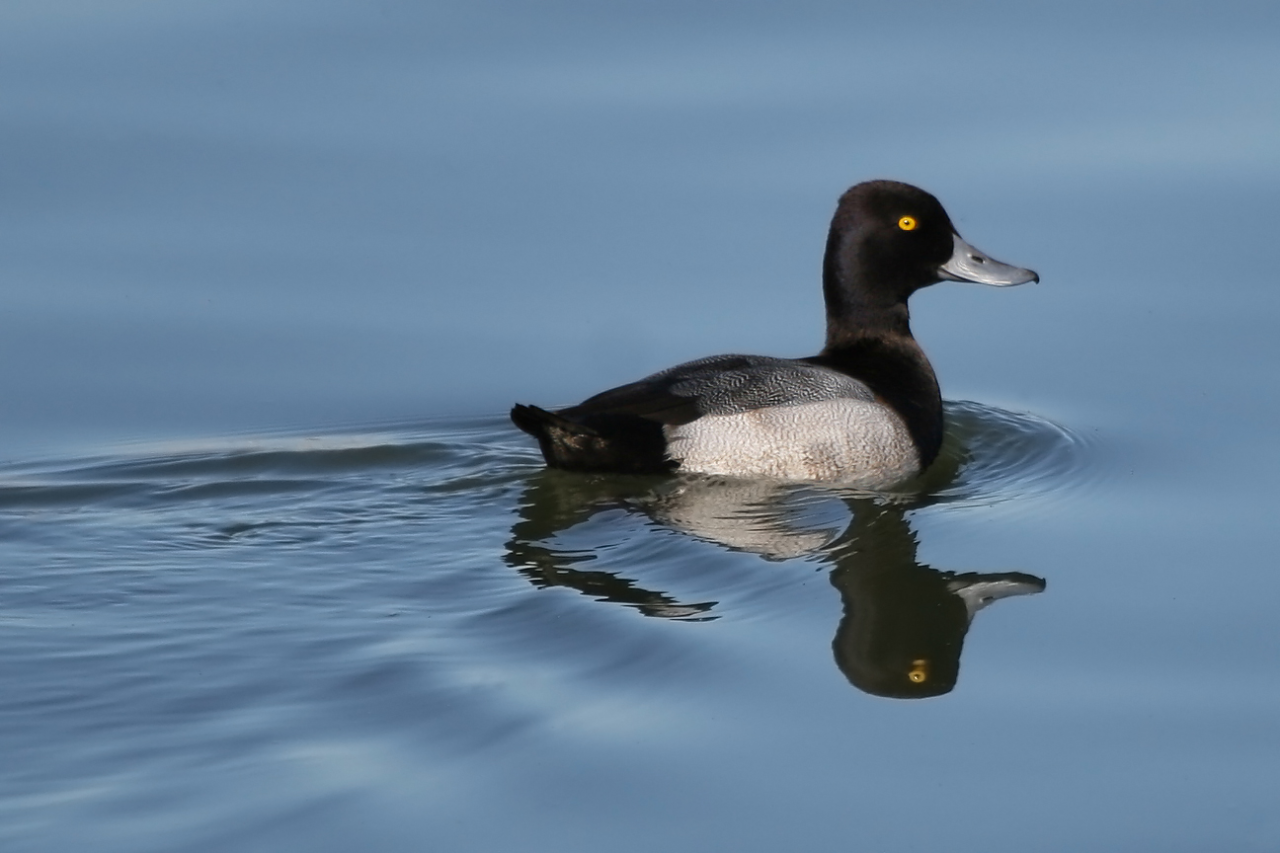
Lesser Scaup by Shersey DC, CC BY 2.0
Name: Aythya
Status: Extant
First Described: 1822
Described By: Bole
Classification: Dinosauria, Saurischia, Eusaurischia, Theropoda, Neotheropoda, Averostra, Tetanurae, Orionides, Avetheropoda, Coelurosauria, Tyrannoraptora, Maniraptoriformes, Maniraptora, Pennaraptora, Paraves, Eumaniraptora, Averaptora, Avialae, Euavialae, Avebrevicauda, Pygostylia, Ornithothoraces, Euornithes, Ornithuromorpha, Ornithurae, Neornithes, Neognathae, Galloanserae, Anseriformes, Anseres, Anatoidea, Anatidae, Anatinae, Aythyini
Referred Species: A. valisineria (Canvasback, Extant), A. ferina (Common Pochard, Extant), A. americana (Redhead, Extant), A. collaris (Ring-Necked Ducks, Extant), A. australis (Hardhead, Extant), A. baeri (Baer’s Pochard, Extant), A. nyroca (Ferruginous Duck, Extant), A. innotata (Madagascar Pochard, Extant), A. novaeseelandiae (New Zealand Scaup, Extant), A. fuligula (Tufted Duck, Extant), A. marila (Greater Scaup, Extant), A. affinis (Lesser Scaup, Extant), A. shihuibas (Extinct), A. denesi (Extinct)
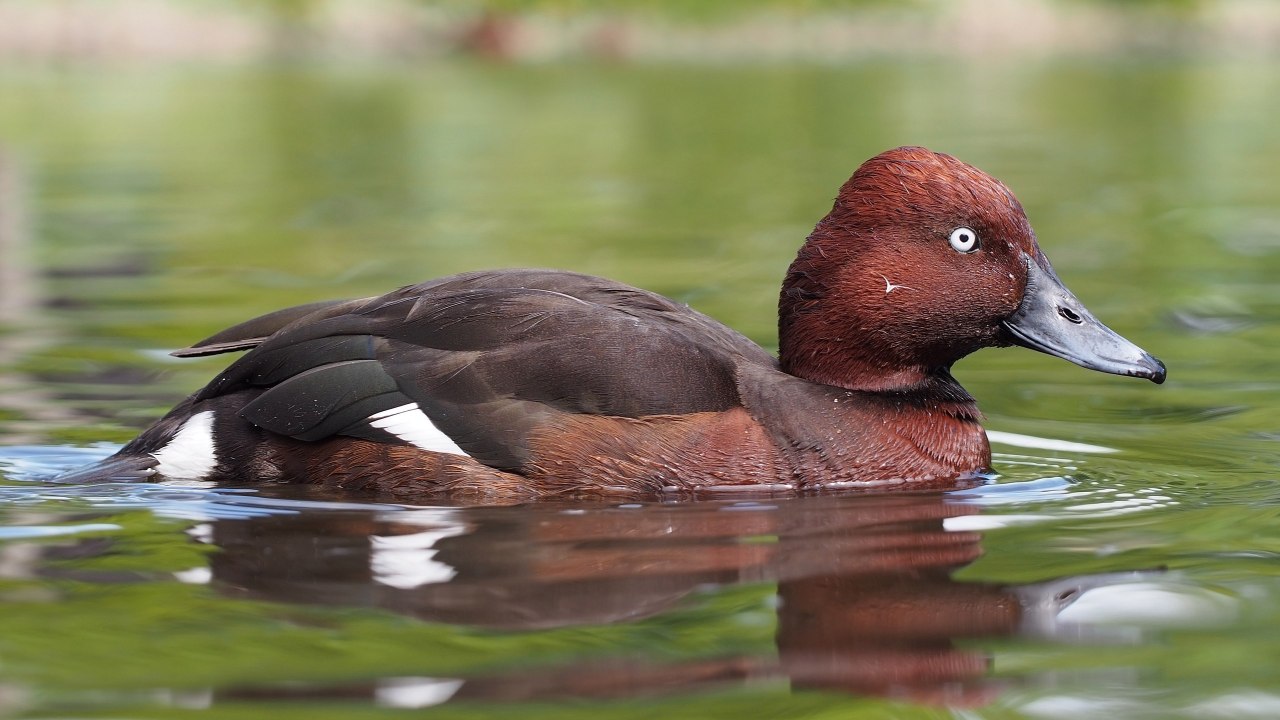
Ferruginous Duck by Francis C. Franklin, CC BY-SA 3.0
Aythya is a large genus of diving ducks from all over the world, including many different species including Scaups and Pochard. While most species in this genus are not threatened with extinction, a few of them are critically endangered, especially those in insular environments. The oldest occurrence of this genus is from the late Miocene, and as such it appears to be about 12 million years old, from the Tortonian age of the Miocene of the Neogene, until today. Almost all of these ducks are associated with marine environments, given their diving ecology.

A. denesi by Scott Reid on @drawingwithdinosaurs
A. shihuibas is one of two known extinct species in this genus, from the Late Miocene of China. A. denesi is another species, hailing from the late Miocene of Hungary, specifically the Polgárdi 4 formation in Feér County. There is also an Early Pleistocene member of this genus from Turkey that remains undescribed. These extinct members of the genus are, in general, known from fairly limited material. A. denesi is known from fairly limited material of the humerus, showing it was very similar to living members of this genus of diving ducks, showing advanced structures typical of this genus, but still retaining some of the more plesiomorphic (re: ancestral) features of ducks in general, including some fairly “primitive” characteristics. This shows that these diving ducks were still transitional in their evolution in the late Miocene, and it was only recently that modern forms for this genus were really starting to appear.

Canvasback by Dick Daniels, CC BY-SA 3.0
The Canvasback, A. valisineria, is an unthreatened species of this genus primarily from North America. It breeds in Canada and the Western United States, and spends the winters in most of the rest of the United States and Mexico. The largest species of this genus, it is about the size of a mallard, weighing up to 1.6 kilograms, though it is more compact than the mallard. The males have ruddy brown heads with black necks and white bodies, while the females are more brown all over. They nest primarily on water near prairie marshes, though some breed in subarctic river deltas. They lay about 5 to 11 eggs at a time. They feed primarily on seeds, buds, leaves, tubers, roots, snails, and insects, mainly by diving but also by dabbling, given their wide variety of habitats - they are highly migratory ducks!

Common Pochard by Tony Hisgett, CC BY 2.0
The Common Pochard, A. ferina, is a species vulnerable to extinction from Europe and Asia. They are migratory birds as well, spending winter in Southwestern Europe, and are commonly found breeding in the northern British Isles. The males have distinctive red heads, black necks, and white bodies, while the females are primarily brown and actually make growling sounds. They form very large flocks, often mixed ones, and feed by both diving and dabbling on aquatic plants, molluscs, insects, and even fish. They usually feed during the night. Due to urbanization and overhunting, their populations are currently on decline.
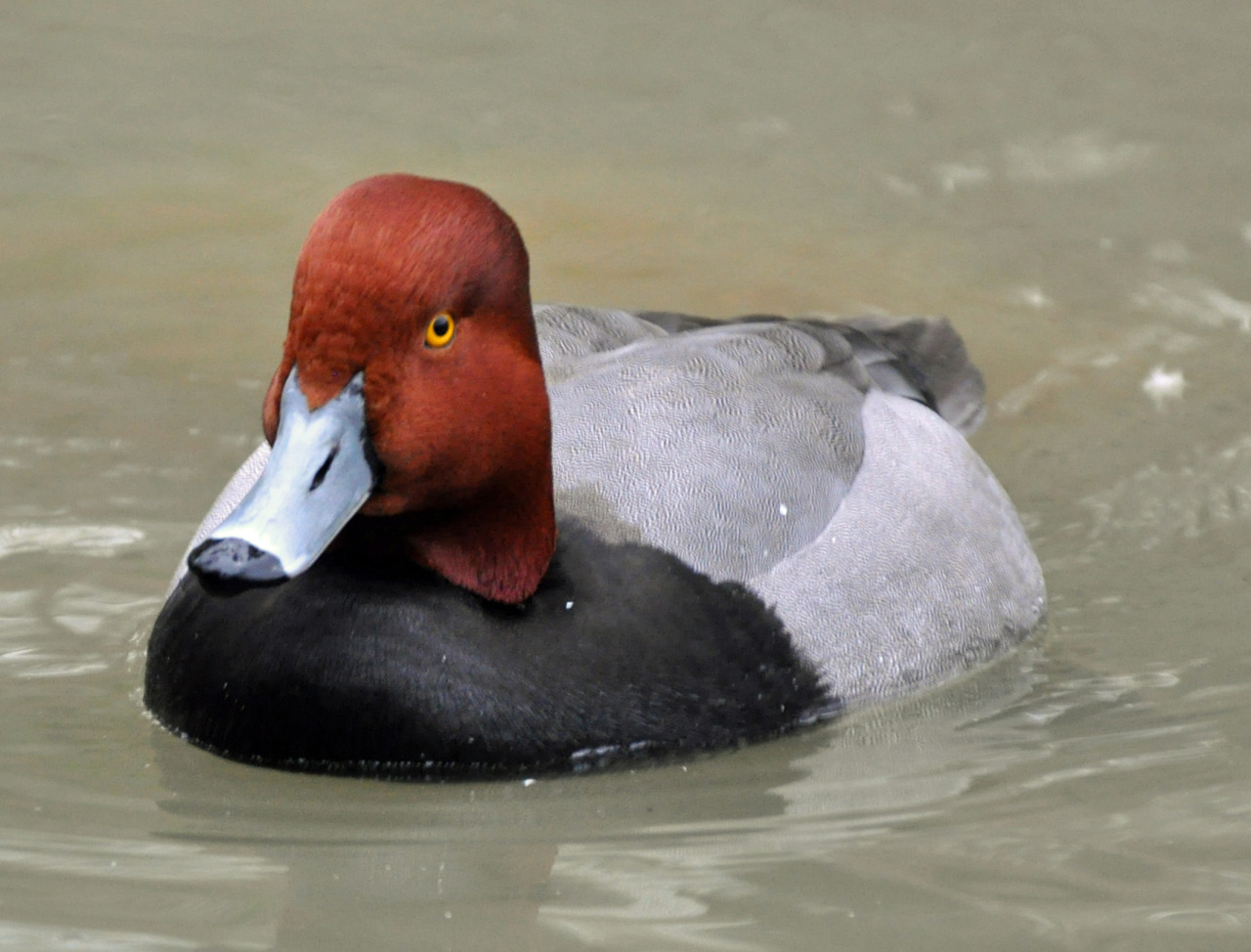
Redhead Duck by Kevin Bercaw, CC BY 3.0
The Redhead Duck, A. americana, is a nonthreatened species from North America, with males once again very distinct due to the bright red heads and greyish-black bodies. They spend the winter in Southern North America, and then breed in the Western United States and Canada, migrating between these two locations. They are very well adapted for underwater foraging, with legs far back on their bodies to aid in diving, but making land walking extremely difficult. They feed primarily on gastropods, molluscs, and insects, and will eat plants during the winter as well. They prefer living in wetland environments, especially ones with deep enough water for vegetation for their breeding habitat. They do flock together on lakes and migrate in pairs, with elaborate courtship rituals involving the males kinking their necks and stretching them for display, making calls until the female shows reciprocation. They build nests in thick plant material, and actually breed in very social environments, laying eggs of up to 7 young.
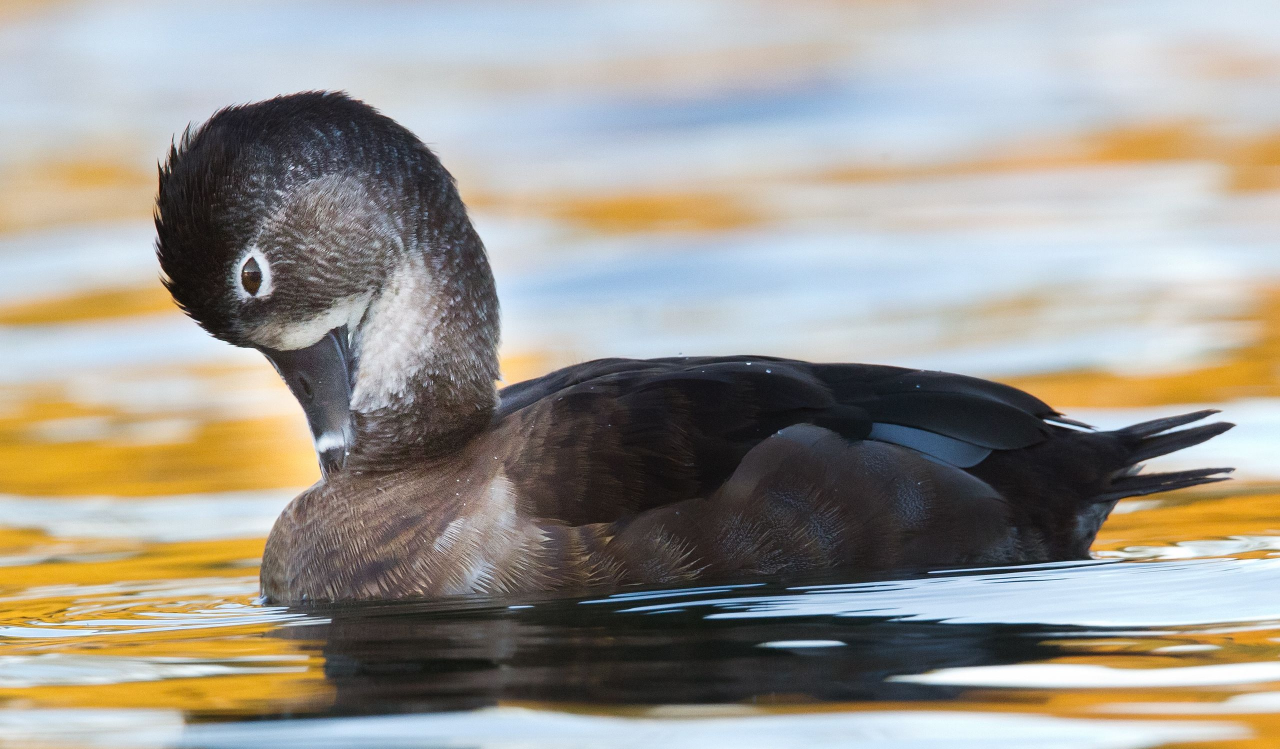
Ring-Necked Duck by Dan Pancamo, CC BY-SA 2.0
The Ring-Necked Duck, A. collaris, is another diving duck of least concern from North America, breeding in Canada and then migrating down to the Southwestern United States and Mexico for the winter season. Dark in color, the males have noticeable white beaks and bright white wings, with red rings around their necks, while the females are more dark in color all around (as shown above). They breed in wooded lakes and ponds, mainly in boreal regions, and then migrate to lakes, ponds, rivers, and bays in warmer climates. Though they form pairs for breeding, they usually separate after reproduction. About 10 eggs are laid per clutch, which are guarded by the mothers until the young can fly. They are omnivores, feeding on animals and plants throughout the year, though they prefer plants to animals as adults.
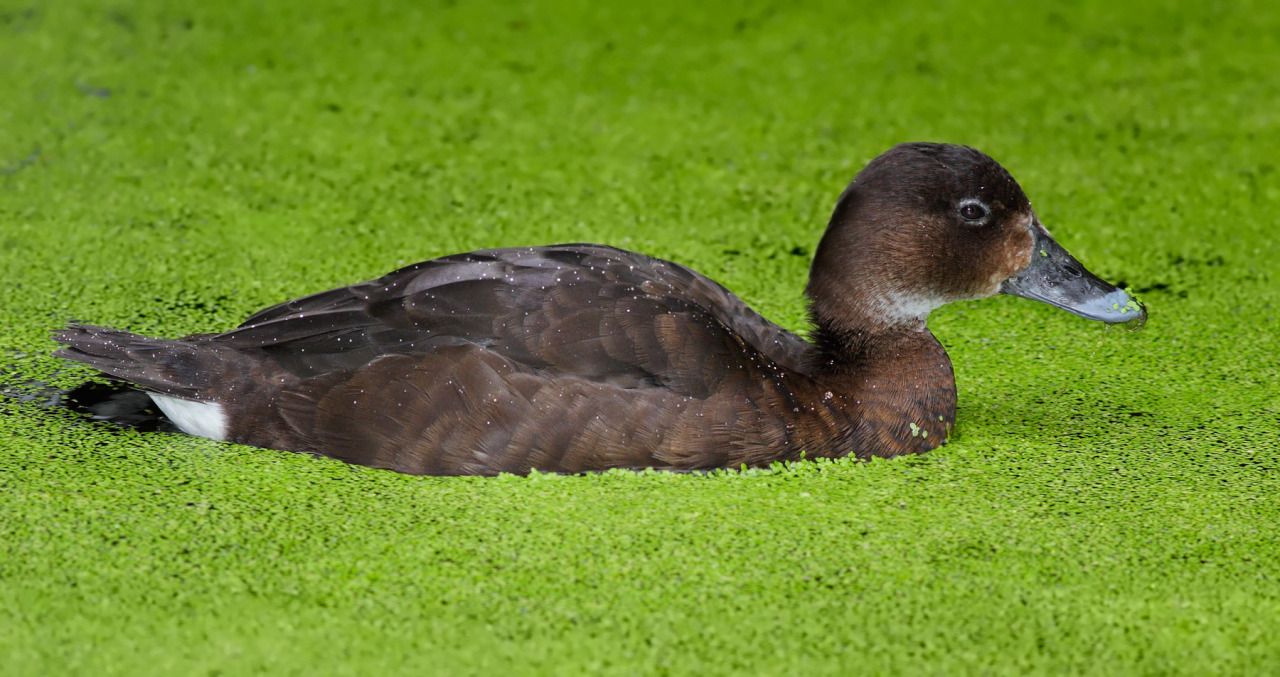
Hardhead, by Fir0002, GFDL 1.2
The Hardhead, A. australis, is the only diving duck known from Australia, not considered threatened with extinction due to its widespread presence in its range. They are common in the south-eastern portion of Australia, but also is found frequently near coasts. They are fairly nomadic ducks, except during drought years, when they disperse in search of water. They dive deeply for food, and are often found submerged fro even a minute at a time, eating a lot of small water animals. They enjoy living in lakes, swamps, and rivers, but are usually avoiding the coast, and are rarely found on land. They are actually fairly small ducks, and both males and females are brown, though the males have darker brown heads.
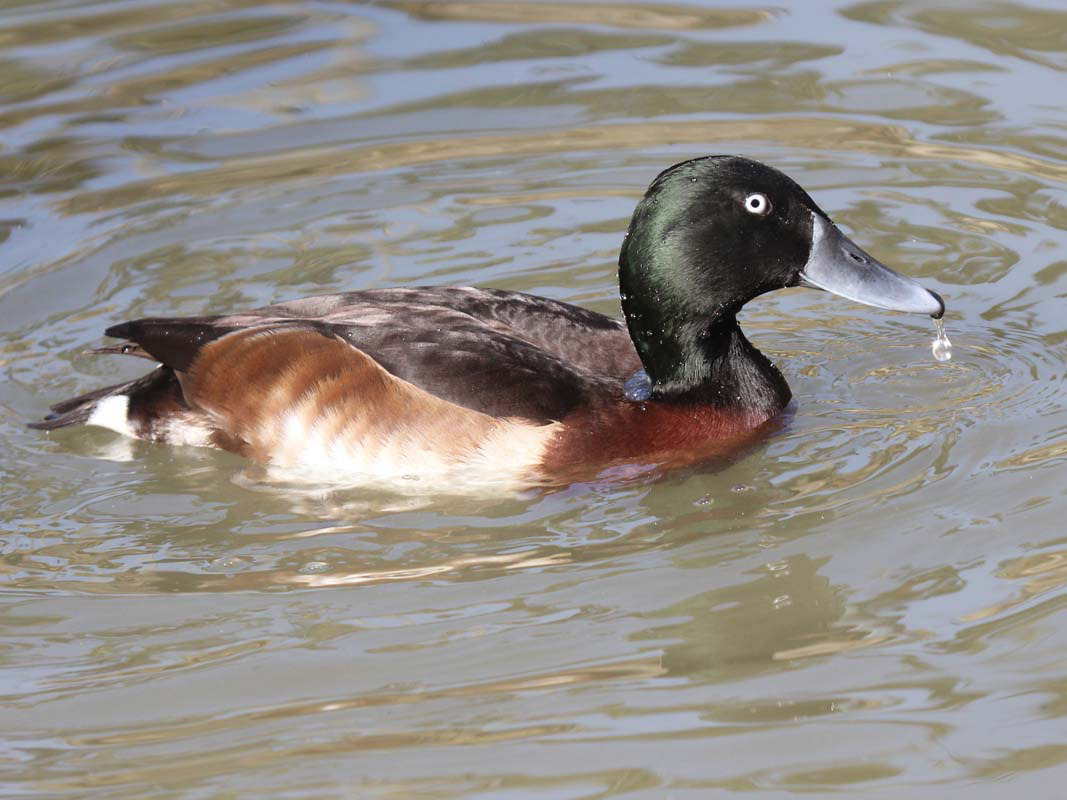
Baer’s Pochard by Dick Daniels, CC BY-SA 3.0
Baer’s Pochard, A. baeri, is a critically endangered diving duck from eastern Asia, breeding in Russia and China and migrating to Vietnam, Japan, and India for the winter months. It is a fairly small duck with long, distinctive beaks, and dark heads with brown bodies in the males. They are fairly similar in general to other members of this genus, breeding around lakes with rich vegetation and nesting in dense grass, typically favoring coastal wetlands and ponds. Unfortunately, its numbers are decreasing very rapidly, primarily due to wetland destruction and hunting, with up to 3,000 individuals killed every year.
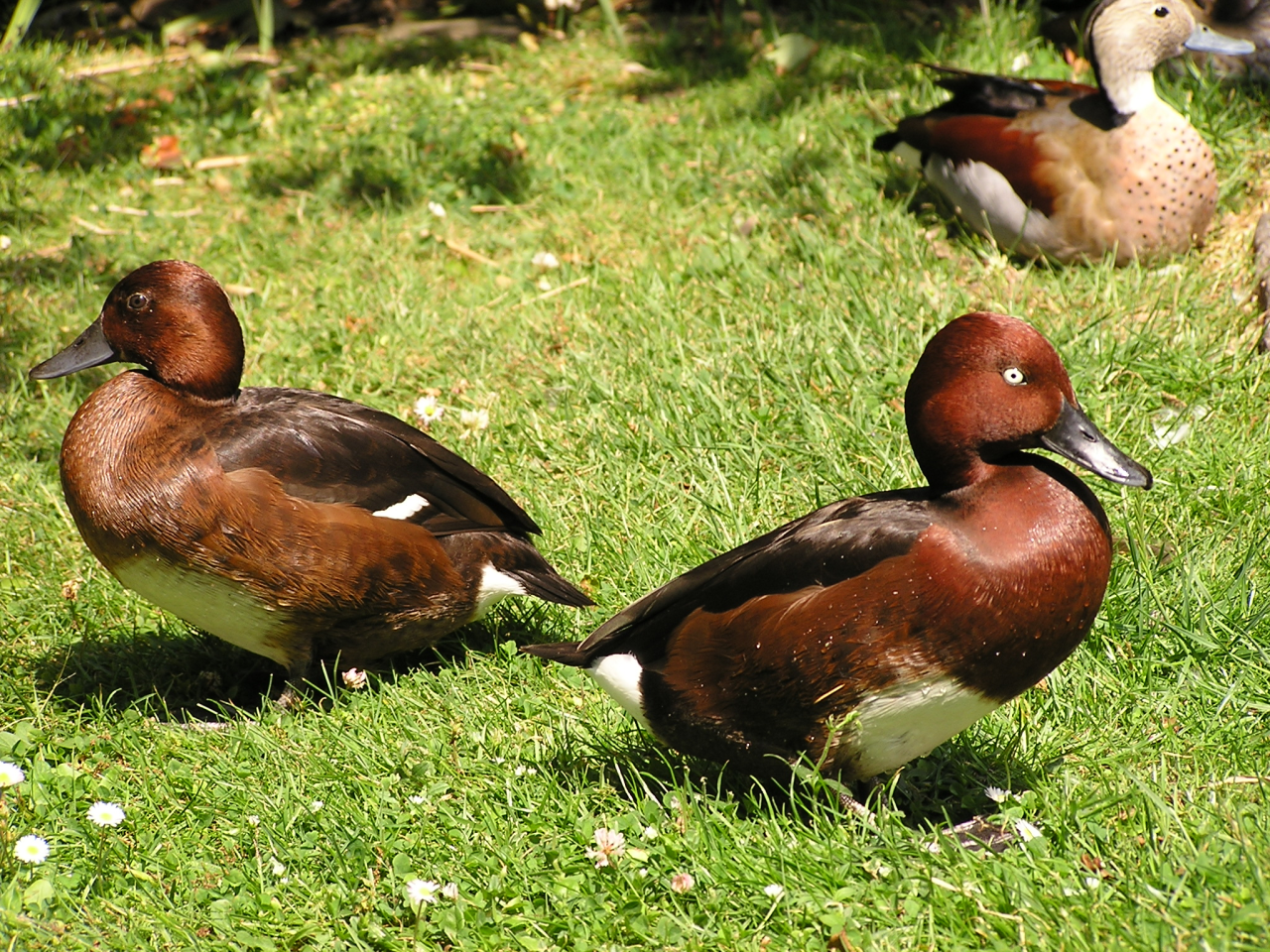
Ferruginous Ducks by Erbanor, in the Public Domain
The Ferruginous Duck, A. nyroca, is a near-threatened species from Eurasia, with males and females being a chestnut brown, though the females slightly darker and duller than the males. They live in shallow bodies of fresh water, sometimes slightly salty ones. They breed from the Iberian Peninsula and the Maghreb south to Arabia, and then winters in the Mediterranean Basin and Black Sea. They are fairly social, and lay eggs in sites next to water. They both dive and dabble for food, feeding primarily on aquatic plants and insects. They are threatened due to habitat degradation by humans, mainly due to impoundment, drainage, and pollution. Non-native species also cause invasive competition for these birds.

Madagascan Pochard by Frank Vassen, CC BY 2.0
The Madagascan Pochard, A. innotata, is a very critically endangered and rare species of diving duck, primarily known from Lake Matsaborimena in Madagascar. The population today is only around 80 individuals. They probably started an extreme decline in the mid-1900s, due to introduction of fish species that would kill pochard chicks. Rice cultivation has also lead to sharp population declines. The last sighting prior to recent times was a small flock in 1960; after that point, only a few more have been seen, though rescue plans are ongoing and captive breeding is working, with reintroduction on Lake Sofia planned for the near future.
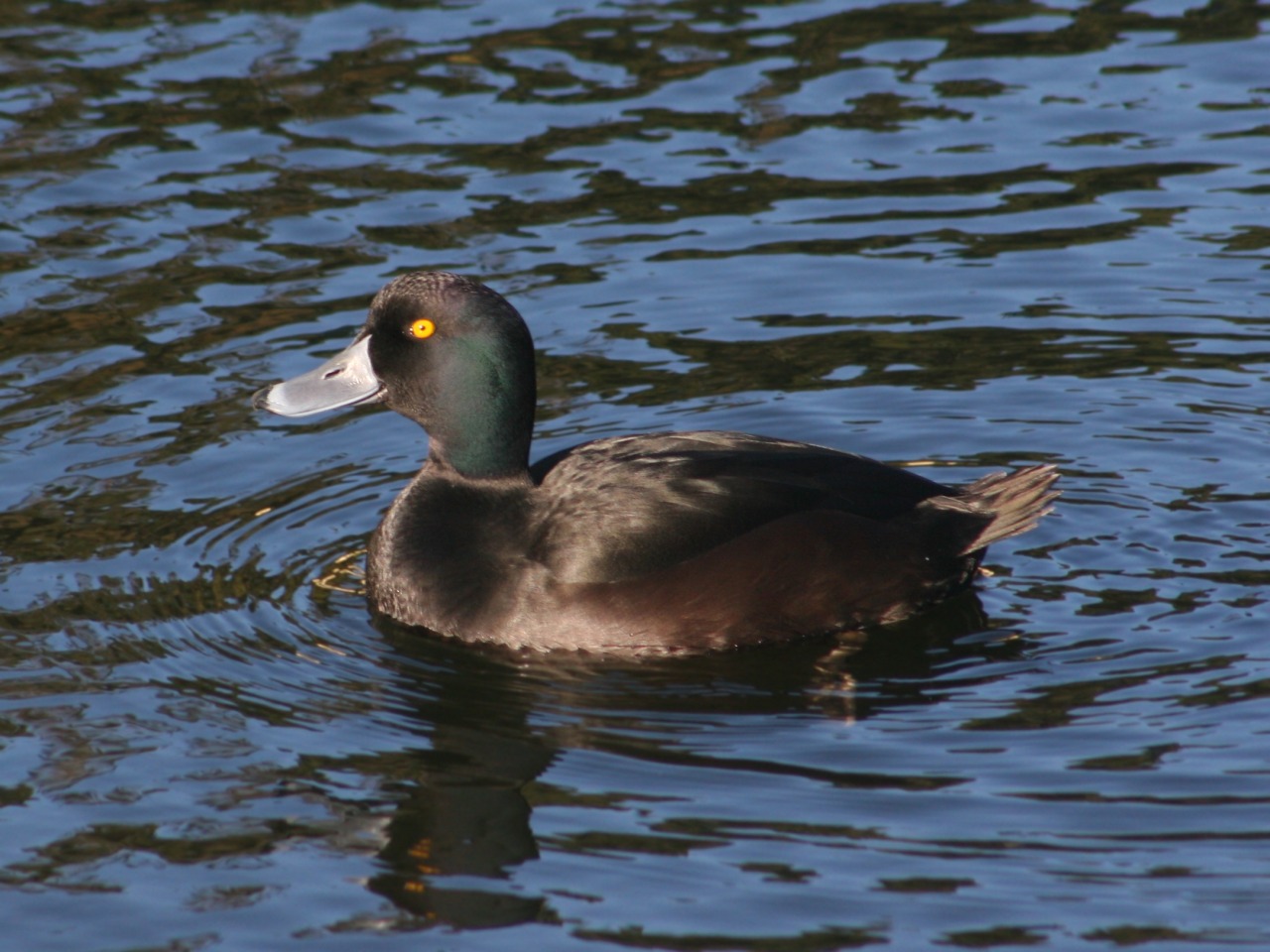
New Zealand Scaup by Tony Wills, CC BY-SA 3.0
The New Zealand Scaup, A. novaeseelandiae, is a nonthreatened species found throughout New Zealand and no one else. It is commonly called the Papango by the Māori. The Papango is a diving duck that can submerge for up to half a minute, looking for aquatic plants and small animals. They are found in deep freshwater lakes and ponds, and it doesn’t migrate. They lay eggs from October to March, up to eight in a clutch, which are incubated by the females and brought to suitable diving locations soon after hatching. Males have striking yellow eyes and greenish heads, while the females have a white patch on their faces and non-yellow eyes.

Tufted Duck by Andreas Trepte, CC BY-SA 2.5
The Tufted Duck, A. fuligula, is a small, nonthreatened diving duck, with up to one million birds out in the wild. It is found across all of the Northern Hemisphere, found as a winter visitor in the United States and Canada, though primarily known from Europe and certain localities in Asia such as the Indian subcontinent and Japan. They breed close to marshes and lakes with vegetation to conceal their nests, and they are also often found on coastal lagoons and ponds. They dive for food, feeding primarily on molluscs and insects. The males are all black except for white sides of their bodies, with clear little crests coming off of their heads; while the females are more brownish.
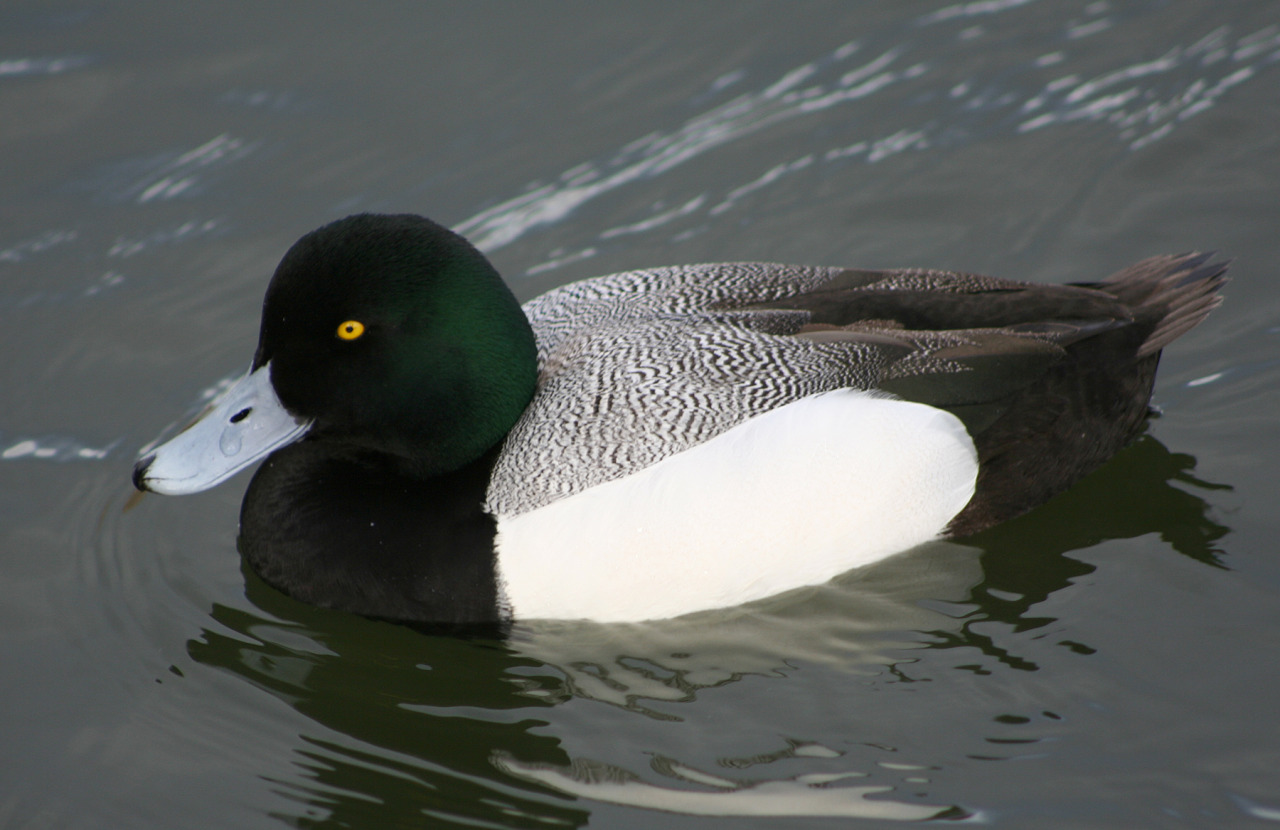
Greater Scaup by Calibas, CC BY-SA 4.0
The Greater Scaup, A. marila, is a commonly known diving duck from the Northern Hemisphere. This duck is so commonly known that decoys for hunting are often designed off of it, and their distinctive patterns are see frequently in duck-related things (my mom had bookends that looked like Greater Scaups). The males have dark green and black heads and striped backs, with distinct white and black patterns on their bodies. The females are mostly brown, but also have white patches on their sides. These ducks live in both North America and Eurasia, typically near coastal areas and around lakes. They eat aquatic molluscs, plants, and insects, which they get through diving. They weigh up to 1.4 kilograms, and are primarily associated with polar regions as well. They breed in the tundra and boreal forests, nesting on islands in northern lakes. The males make quick soft whistles to attract the females, which make raspy vocalizations in response. They form monogamous pairs, which nest close together, and after the eggs are laid the males leave the females. The females lay up to nine eggs, and the chicks are able to walk nearly immediately, though the female guards them until they’re able to fend for themselves. They are threatened by a variety of predators, including humans; they are also threatened by pollution; but there are conservation efforts ongoing, including banding programs.
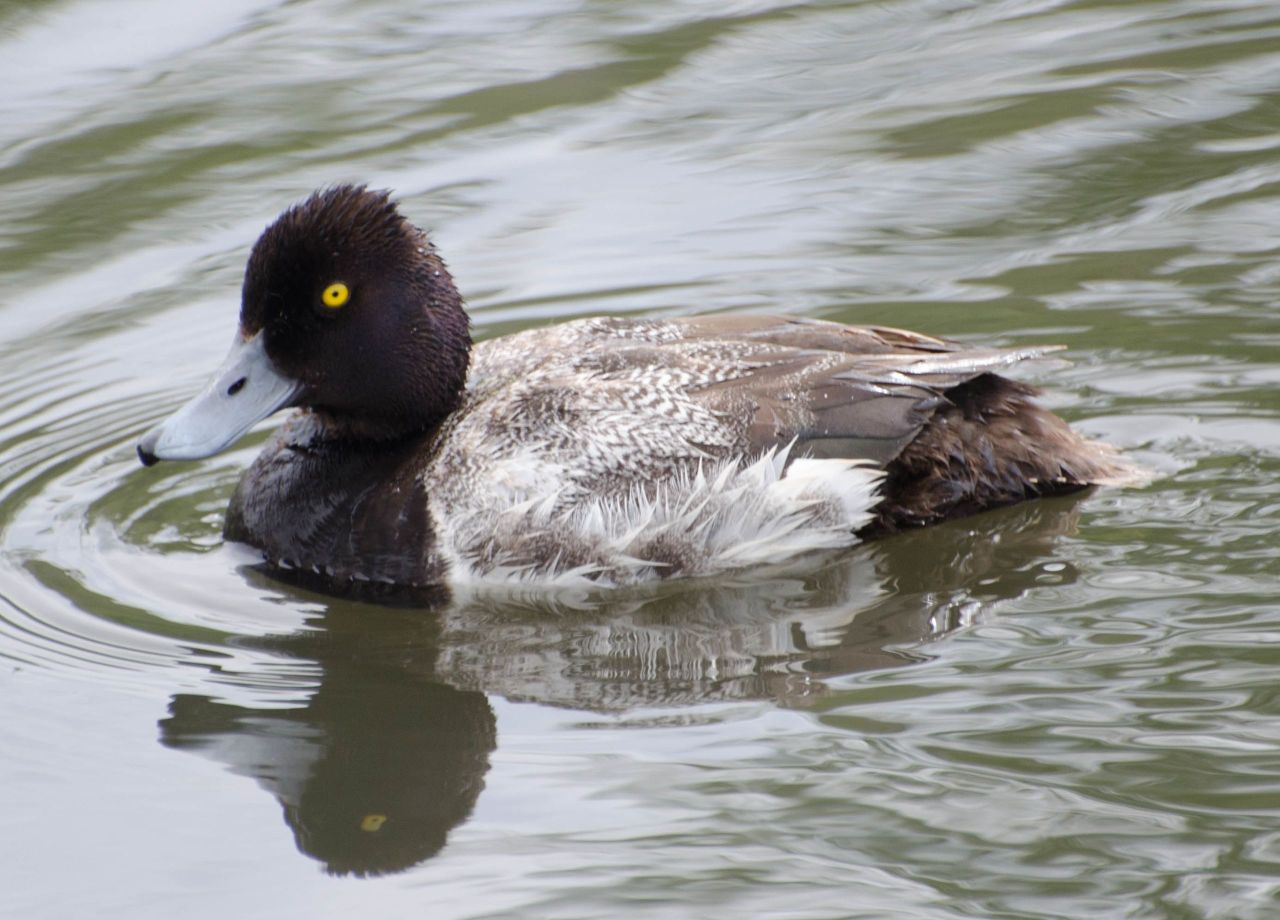
Lesser Scaup by Connor Mah, CC BY-SA 3.0
And finally, the Lesser Scaup, A. affinis, is a smaller American species that is also not threatened with extinction. It breeds primarily in Canada, migrates across the Northern United States, and winters in the Southern United States, Mexico, and Central America. These ducks weigh up to 1 kilogram, and the males have black heads and striped bodies, while the females are primarily brown. Quieter ducks, they are frequently hard to distinguish from the Greater Scaup, especially since they often flock together. However, Lesser Scaups have darker irises than Greater Scaups. These ducks breed primarily in inland lakes and marsh ponds, and then migrate south. They forage through mud at the bottom of these waterways, and even will dabble rather than dive, though they primarily dive for molluscs and some aquatic plants. They nest in sheltered locations near the water, in shallow depressions lined with plants and down feathers, and lay up to 11 eggs in a nest, which are watched primarily by the mothers. Though not threatened yet, they are experiencing sharp declines in population, primarily due to decreasing breeding success, pollution, and habitat destruction, as well as climate change.
Buy the author a coffee: http://ko-fi.com/kulindadromeus
Sources:
https://en.wikipedia.org/wiki/Aythya
https://en.wikipedia.org/wiki/Canvasback
https://en.wikipedia.org/wiki/Common_pochard
https://en.wikipedia.org/wiki/Redhead_(bird)
https://en.wikipedia.org/wiki/Ring-necked_duck
https://en.wikipedia.org/wiki/Hardhead
https://en.wikipedia.org/wiki/Baer%27s_pochard
https://en.wikipedia.org/wiki/Ferruginous_duck
https://en.wikipedia.org/wiki/Madagascan_pochard
https://en.wikipedia.org/wiki/New_Zealand_scaup
https://en.wikipedia.org/wiki/Tufted_duck
https://en.wikipedia.org/wiki/Greater_scaup
https://en.wikipedia.org/wiki/Lesser_scaup
Zelenkov, N. V. 2016. Revision of Non-Passeriform Birds from Polgárdi (Hungary, Late Miocene): 1. Anseriformes. Paleontological Journal 50 (5): 83-86.













